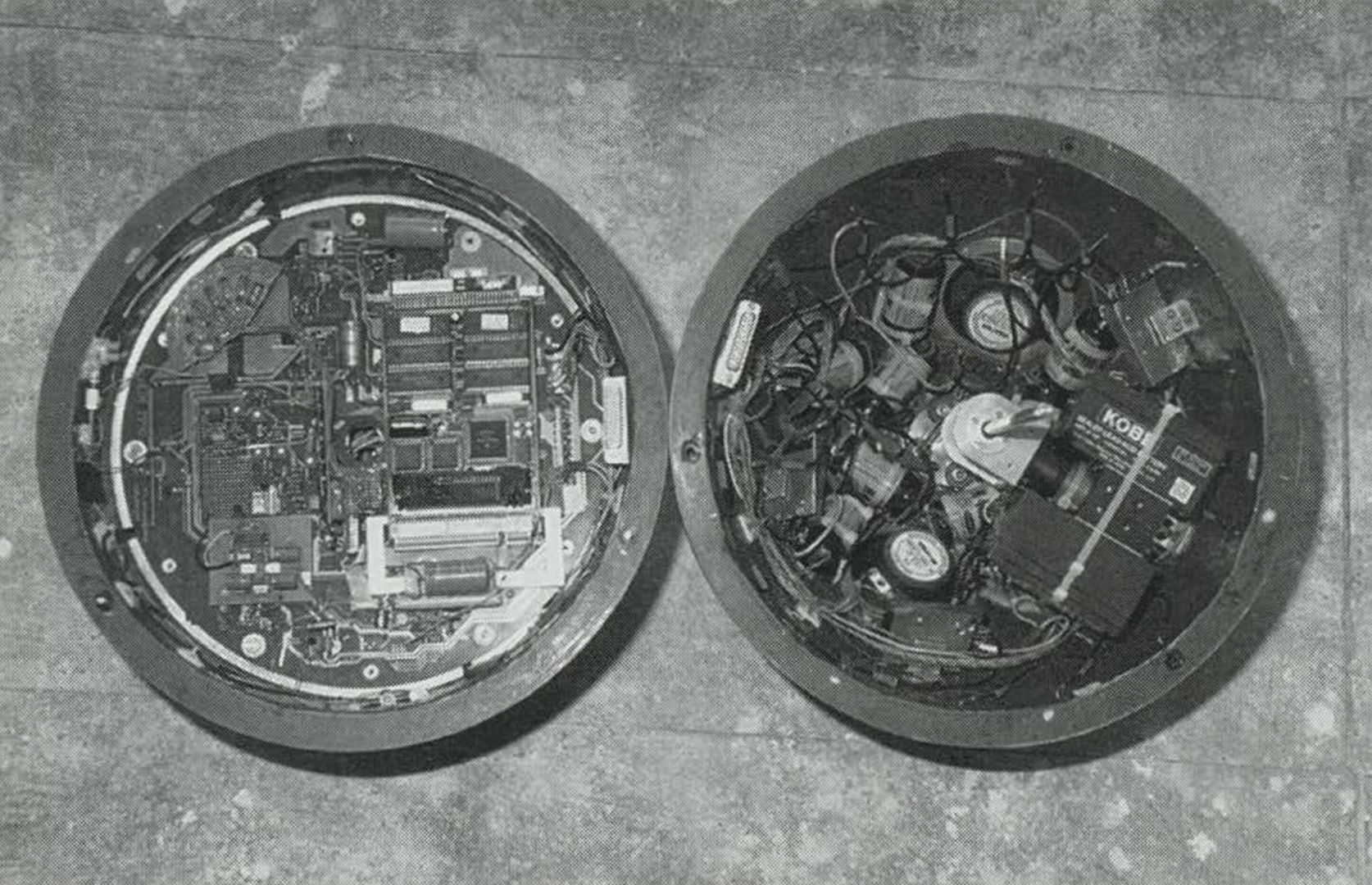Martin Spanjaard: Adelbrecht
Artist(s):
Title:
- Adelbrecht
Exhibition:
Category:
Artist Statement:
To briefly describe Adelbrecht: it’s an anthropomorphized protozoa-robot in the form of a ball of 40 cm. diameter. It- or let’s say: he talks about his life: rolling, bumping, and ball/human interaction: the things that happen to a ball. He confronts us with the boundary between Being and Machine, with the crossing of It to Him. I function the example and the source of inspiration, so he also is a self-portrait. Finally, he is an actor trying to interest us enough to follow him for some time.
Adelbrecht is a ball, rigged with an eccentric hanging electric motor, which makes him roll. The ball is fitted with some sensors, a computer and a Dutch voice, speaking English. This ensemble enables him to have a limited knowledge of the world and to chatter about it.
His sensors detect position, bumps, ambient sound level, touch, and low batteries. An interrupt driven program scans his sensors 10 times per second. Each sense (sensor + software) detects among other things the occurrence of a ‘state,’ e.g., rolling, not rolling, bumping a lot, bumping normal. The combination of states leads to the perception of ‘situations;’ e.g., being stuck, being petted, bumping a lot. He discriminates some 17 different situations.
Furthermore he computes ‘mood’ and ‘lust.’ Lust degrading from the moment he is being awaken till he puts himself to ‘sleep’ (typically around several minutes) and rising again during his sleep. Petting heightens his lust. However if he gets stuck his lust lowers fast. If this lasts long enough he’ll switch himself off. But not after having asked for help, getting angrier all the time. His mood, hovering around a mid-level, functions likewise. Mood and lust affect each other. An ‘outer loop’ program uses all this (plus a diversity of sensorial information) to generate speech and behavior: understandable, meaningful, but not predictable.
The first time I showed an earlier, far less powerful version of Adelbrecht to the public in 1984, something happened that could have been a hint not to go on with the project. A small crowd of relatives and friends was gathered in a small, shabby gallery in Amsterdam. Awaiting the moment when they would finally see Adelbrecht, about whom they had heard me say for more than two years: ‘he is almost finished.’
At exactly three o’clock I released him from the back room, to let him roll to the middle of the crowd. He halted, introduced himself and began his first public role. I stood there, sweating and waiting for something to go wrong, as had happened 20 minutes before, probably due to ‘stack overflow.’ And indeed, five minutes later it happened: a long ‘aaahh’ nagged through the room. I walked over, picked him up, opened the lid, and reached for the reset switch. This tableau occurred several times, but my guests were convinced, consuming drinks, food, and conversation. Half an hour later, one of them asked me to come and listen to Adelbrecht. Fortunately he still rolled and made sounds, although not the intended ones.
He kept repeating: “I am god, I am Christ, I am god, I am god-damned, I am god,” etcetera, etcetera. One way or the other, in the regular sentence ‘I am Adelbrecht’ he said one of the curses he could utter after a bump and then started that sentence anew, so he never reached ‘Adelbrecht.’ This went on, till he suddenly switched the direction of his motor backwards, which is possible but not allowed. This causes Adelbrecht to unscrew himself. The two halves of the ball started to part and after a little while the round god shut up. At that moment I couldn’t think of a better ending of the afternoon.
Affiliation Where Artwork Was Created:
- Montevideo Time-Based Arts





